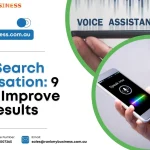Let’s be honest. For years, “personalization” in B2B marketing meant little more than slapping a prospect’s name and company into a template. It felt personal, sure, but it was like getting a birthday card with your name signed in pen—you know it came from a stack of a thousand.
That era is over. Today, we’re talking about hyper-personalization. This isn’t just about knowing who someone is; it’s about understanding what keeps them up at night, how their business ticks, and what they need to succeed. It’s the difference between a generic greeting and a conversation that starts, “I saw the challenge you mentioned in that industry webinar, and here’s a thought…”
Hyper-personalization is the strategic use of data and AI to deliver uniquely relevant experiences to each individual buyer throughout their entire journey. It’s marketing that feels less like a broadcast and more like a one-on-one consultation.
Why Generic B2B Marketing is a Sinking Ship
B2B buyers are, first and foremost, people. And people are inundated with content. They’ve developed a kind of content blindness to anything that feels mass-produced. A generic message doesn’t just get ignored; it can actively damage your brand’s credibility.
Think of it this way: if you walked into a high-end tailor and they tried to sell you a suit straight off the rack without taking a single measurement, you’d walk out. The modern B2B buyer feels the same. They expect you to have done your homework. They expect a fit.
Here’s the kicker: the data backs this up. Companies that lead with advanced personalization see a 10-15% uplift in revenue growth and can reduce marketing costs by up to 20%. It’s not just a nice-to-have; it’s a direct line to your bottom line.
Building Your Hyper-Personalization Engine: Core Strategies
Okay, so how do you actually do this? It’s not about magic, it’s about method. Here are the foundational strategies to build a truly personalized marketing engine.
1. Go Beyond Firmographics with Intent Data
Sure, you know their industry and company size. But do you know what they’re actively searching for? Intent data is the secret sauce. It tells you which accounts are actively researching solutions like yours by analyzing their online behavior—the content they consume, the keywords they search, the forums they visit.
This allows you to move from “This company fits our ideal customer profile” to “This company is in an active buying cycle for our specific solution right now.” That’s a game-changer.
2. Map Content to the Buying Committee (Not Just the Company)
A single B2B deal might involve a dozen people: the IT director, a C-suite executive, a end-user manager, a financial controller. Each has different priorities and pain points.
Hyper-personalization means creating and delivering content tailored to each role.
| Role | Primary Concern | Content Type |
| CTO | Security, Scalability, ROI | Technical whitepapers, ROI calculators |
| Marketing Manager | Ease of Use, Team Adoption | Case studies, product demo videos |
| Financial Analyst | Cost, Contract Terms | Pricing guides, competitive analysis sheets |
3. Dynamic Website and Ad Experiences
Your website shouldn’t be a static brochure. With tools like IP recognition and website personalization platforms, you can create dynamic experiences. A visitor from a known manufacturing company, for instance, could be greeted with a homepage banner featuring a case study from another manufacturer, while a tech startup sees a different message entirely.
This extends to paid ads, too. Retargeting campaigns can be segmented to show specific ads based on the exact pages a user visited or the content they downloaded.
The Tools and Tech That Make It Possible
You can’t do this manually. The scale is just too immense. Thankfully, the tech has caught up. The core of your stack will likely include:
- A Customer Data Platform (CDP): This is the brain. It unifies data from your CRM, website, email, and ad platforms to create a single, coherent view of each account and contact.
- Marketing Automation (on steroids): Modern platforms go beyond simple drip campaigns. They use AI to score leads based on behavior, predict churn, and trigger hyper-relevant communications.
- AI-Powered Content & Analytics: Tools that can analyze your content and suggest the best piece for a specific persona at a specific stage, or even generate personalized email copy at scale.
Avoiding the Creepy Factor: Personalization with Prudence
There’s a fine line between being helpful and being, well, creepy. Getting this right is crucial. You know, when an ad follows you around the internet for a product you only looked at once, it feels invasive.
The key is value-exchange. Your personalization should feel like a service, not surveillance. Be transparent about your data use. Provide clear opt-outs. And always, always ask yourself: “Does this message provide genuine value to this person, or am I just showing off that I have their data?”
If you’re not sure, err on the side of caution. Trust is harder to earn than a click.
The Future is a Segment of One
We’re rapidly moving towards a world where the ultimate segment is a segment of one. Where every single interaction—from the first ad click to the final contract negotiation—is shaped by a deep, respectful, and insightful understanding of the individual on the other side.
This isn’t about replacing the human touch. It’s quite the opposite. By letting machines handle the heavy lifting of data analysis and scale, we free up our sales and marketing teams to do what they do best: build genuine, human relationships. Hyper-personalization, at its core, is just the art of listening at scale. And in a noisy digital world, the company that listens best, wins.
“. Learn actionable hyper-personalization strategies that use intent data and AI to drive B2B revenue and build real customer relationships.]





